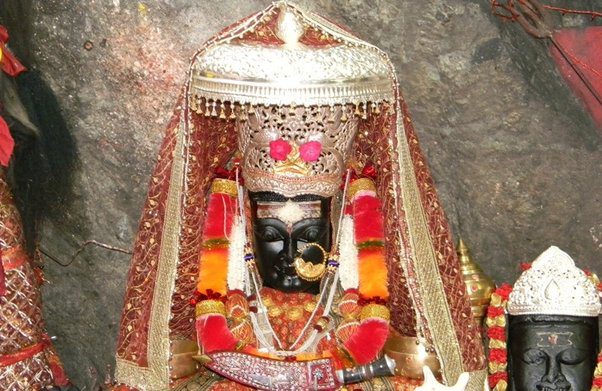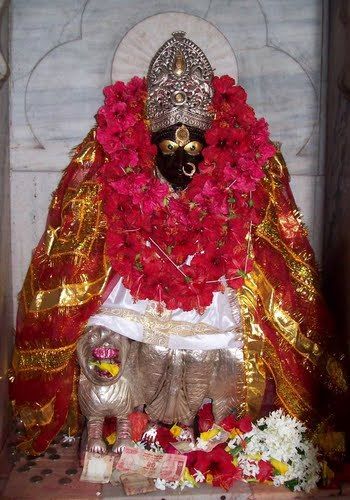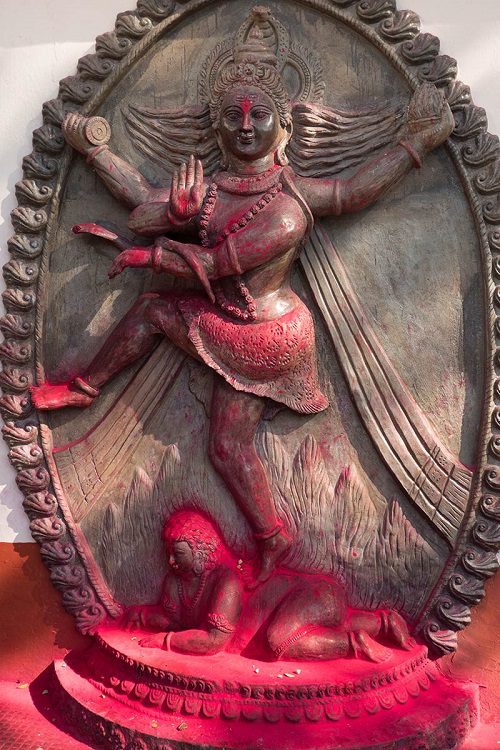Wavs
Kamakhya


About Kamakhya:
Kamakhya Temple is a significant Hindu temple dedicated to Goddess Kamakhya, located in Guwahati, Assam, India. It is one of the oldest of the 51 Shakti Peethas, which are sacred shrines associated with the divine feminine energy or Shakti. Here are some key aspects about Kamakhya:
-
Location: The temple is situated atop the Nilachal Hill in Guwahati, Assam. It overlooks the Brahmaputra River.
-
Goddess Kamakhya: The main deity of the temple is Goddess Kamakhya, who is believed to be a representation of the feminine power or Shakti. She is worshiped in various forms, including as a fertility goddess.
-
Tantric Influence: Kamakhya Temple is closely associated with Tantric practices and is considered one of the most important centers of Tantric worship in India. The inner sanctum of the temple is a cave-like chamber where no idol of the goddess is present. Instead, a natural fissure in the rock, symbolizing the yoni (female genitalia), is worshiped as the goddess.
-
Ambubachi Mela: One of the most famous festivals associated with Kamakhya Temple is the Ambubachi Mela, which is held annually during the monsoon season (around June-July). It celebrates the menstruation of the goddess Kamakhya and is believed to be a time of fertility and regeneration.
-
Mythological Significance: According to Hindu mythology, the temple is associated with the legend of Lord Shiva and Goddess Sati. It is believed that when Lord Shiva was carrying the body of Sati, whose corpse was cut into pieces by Vishnu’s Sudarshana Chakra, her womb and genitals fell at the spot where the temple now stands.
-
Architectural Style: The temple complex reflects a mix of architectural styles, including ancient and medieval elements. The current structure was rebuilt in the 17th century after being destroyed by invaders.
-
Pilgrimage: Kamakhya Temple is a popular pilgrimage destination for devotees of Shakti and attracts devotees from all over India and abroad, especially during festivals like Navaratri.
Overall, Kamakhya Temple holds immense spiritual and cultural significance in Hinduism, particularly in the worship of the divine feminine and in Tantric traditions.
Puja of Kamakya:
- Daily Poojas: The temple conducts regular poojas throughout the day, starting with the early morning rituals. These include offerings of flowers, fruits, and various items symbolizing devotion to Goddess Kamakhya.
-
Ambubachi Mela Pooja: The Ambubachi Mela, held annually during the monsoon season (June-July), is a significant event where the temple remains closed for three days. It is believed to mark the menstruation period of Goddess Kamakhya. On the fourth day, the temple reopens with elaborate poojas and rituals performed to mark the goddess’s rejuvenation.
-
Durga Puja: During the Navaratri festival, particularly the Durga Puja celebrations, special poojas are conducted at Kamakhya Temple. Devotees offer prayers to Goddess Durga, who is seen as an embodiment of divine feminine power and strength.
-
Animal Sacrifice: Though controversial and less common nowadays, historically, animal sacrifices were part of certain rituals at Kamakhya Temple, particularly during Tantric ceremonies aimed at invoking specific energies or blessings.
-
Special Occasions: Throughout the year, various special poojas and rituals are conducted based on specific auspicious days in the Hindu calendar or as per devotees’ requests. These rituals often involve chanting of mantras, offering of sweets, and ceremonial bathing of the goddess’s idol or representation.
These poojas and rituals at Kamakhya Temple play a crucial role in the spiritual and cultural practices of its devotees, reflecting a deep reverence for Goddess Kamakhya and the divine feminine principle in Hinduism.

Pilgrimage Site: Kamakhya Temple is a major pilgrimage destination for devotees of Shaktism, attracting thousands of visitors annually seeking blessings and spiritual fulfillment.
Rituals and Offerings: Daily rituals and offerings are performed by priests, including the lighting of lamps, chanting of hymns, and distribution of prasad (sanctified food).
Holy Water: The temple is known for its natural spring, believed to possess healing properties. Devotees collect water from this spring as sacred.
Astrological Significance: Many devotees visit Kamakhya Temple seeking astrological consultations and remedies, believing in the temple’s ability to alleviate planetary afflictions.
Local Culture: The temple plays a significant role in Assamese culture and traditions, influencing local festivals, art, and literature.
Accessibility: Access to the temple involves climbing steps up Nilachal Hill, offering panoramic views of Guwahati and the Brahmaputra River.
Conservation Efforts: Efforts are ongoing to preserve the temple’s heritage and maintain its structural integrity amidst environmental challenges.
Educational Significance: Scholars and researchers study Kamakhya Temple for its historical, architectural, and religious importance, contributing to academic discourse on Hindu temples.
Tourism: Besides pilgrims, the temple attracts tourists interested in exploring Assam’s spiritual and cultural heritage.
Global Appeal: Kamakhya Temple’s fame extends beyond India, drawing international visitors interested in Hindu spirituality and ancient architecture.
These points encapsulate the multifaceted significance of Kamakhya Temple, highlighting its role as a center of faith, culture, and spiritual practices in India and beyond.

